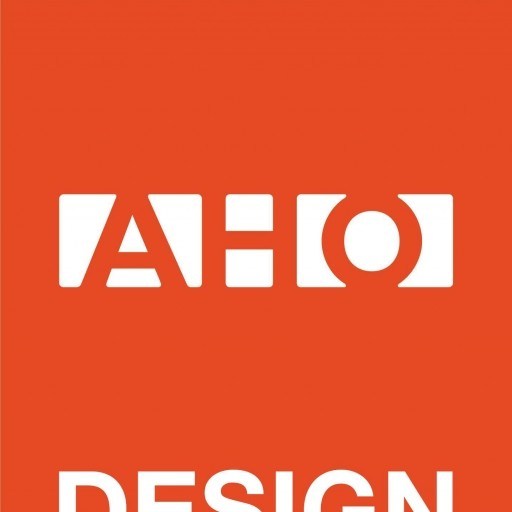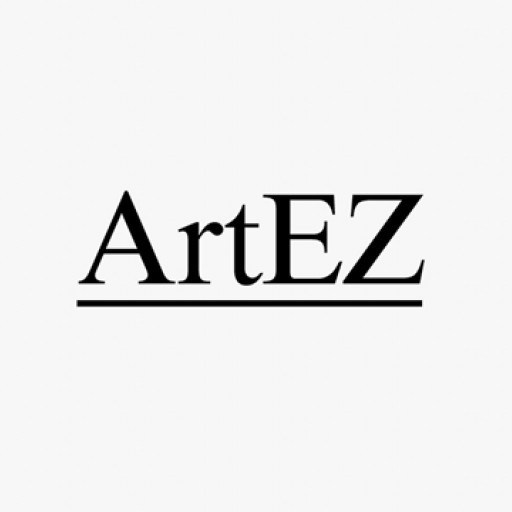Photos of university / #aho_architecture_design
The Master's Programme in Industrial Design at The Oslo School of Architecture and Design offers a comprehensive and dynamic educational experience for students aspiring to excel in the field of design innovation, user-centered development, and sustainable practices. This program is designed to equip students with advanced skills in conceptual thinking, visual communication, prototyping, and technical knowledge necessary for shaping the future of industrial products and environments. Throughout the course, students engage in a variety of studio-based projects, collaborative learning, and interdisciplinary research, fostering creativity, critical analysis, and problem-solving abilities. The curriculum emphasizes the importance of understanding user needs, societal trends, and technological advancements to create meaningful and functional designs that contribute positively to society. Students have access to state-of-the-art workshops, labs, and digital fabrication tools, enabling them to experiment extensively with materials and manufacturing techniques. The programme encourages active participation in workshops, seminars, and exhibitions, providing opportunities to develop professional networks and present their work at influential design events. Graduates of the programme are prepared for careers in diverse sectors including product design, service design, interaction design, and innovation consultancy, among others. They are equipped not only with technical and aesthetic skills but also with a strategic understanding of design processes and business contexts. The Master's Programme in Industrial Design at The Oslo School of Architecture and Design promotes a globally oriented perspective, integrating sustainable development and ethical considerations into every aspect of design practice. The programme fosters an environment of open dialogue, experimentation, and collaboration, enabling students to push creative boundaries and develop innovative solutions to complex societal challenges. Upon graduation, students are well-positioned to contribute to the evolving landscape of design, bringing both artistic excellence and social responsibility to their professional endeavors.
The Bachelor’s Degree in Industrial Design at The Oslo School of Architecture and Design offers a comprehensive and innovative curriculum tailored to equip students with the skills and knowledge necessary to excel in the field of design. The program emphasizes a holistic approach to design education, combining theoretical foundations with practical application. Throughout the course, students engage in developing their creative thinking, problem-solving abilities, and technical skills, enabling them to create functional, sustainable, and aesthetically compelling products and environments.
The curriculum includes courses in design methodology, materiality, prototyping, and digital tools, all aimed at fostering a deep understanding of the design process from concept to realization. Students participate in studio projects that promote collaboration, critical thinking, and user-centered design principles. Internationally recognized faculty guide students through hands-on exercises, workshops, and real-world projects, preparing them for diverse professional careers in industrial design, product development, and innovation management.
In addition to core design courses, students explore topics such as ergonomics, sustainability, and cultural context, ensuring their designs are socially responsible and environmentally conscious. The program also encourages experimentation with new materials and technologies, including digital fabrication, 3D printing, and smart materials, to push the boundaries of traditional design paradigms.
Industry collaboration is an integral part of the educational experience, providing students with opportunities to work on actual client projects, internships, and partnerships with leading companies. This industry engagement enhances students' professional networks and practical skills, making them competitive in the global job market.
Graduates of the Industrial Design program will be well-prepared to work as innovative designers, researchers, or entrepreneurs. They will have the creative and analytical skills necessary to tackle complex design challenges, drive sustainable solutions, and contribute to societal progress through innovative product development. The Oslo School of Architecture and Design’s innovative learning environment, combined with its strong focus on sustainability and societal impact, ensures that students develop into thoughtful, skilled, and forward-thinking professionals ready to shape the future of design.
The Bachelor’s degree program in Industrial Design at The Oslo School of Architecture and Design (AHO) requires applicants to have completed secondary education equivalent to Norwegian upper secondary school, demonstrating strong academic performance and a portfolio that showcases design skills, creativity, and problem-solving abilities. Prospective students must submit a complete application form along with proof of earlier education, a compelling motivation letter outlining their interest in industrial design, and a portfolio comprising visual and conceptual work that reflects their technical skills, innovative thinking, and understanding of design processes.
International applicants may need to provide proof of language proficiency in English, such as TOEFL or IELTS scores, to demonstrate their ability to participate effectively in coursework conducted in English. The admission process involves an assessment based on academic records, portfolio quality, motivation, and relevant experience or prior study in design or related fields. Since the program emphasizes both theoretical knowledge and practical skills, applicants are encouraged to demonstrate their familiarity with CAD software, prototyping techniques, materials, sustainability issues, and user-centered design principles through their portfolio work.
Once admitted, students are expected to engage actively in project-based learning, participate in workshops, and collaborate in multidisciplinary teams to develop innovative design solutions for real-world problems. The program includes mandatory coursework in design theory, history of industrial design, ergonomics, materials and manufacturing processes, sustainability, and digital fabrication methods. Students are also required to undertake a final project or thesis that addresses a complex industrial design challenge, integrating research, creativity, and technical expertise.
Throughout their studies, students must attend lectures, seminars, and practical sessions, and demonstrate their ability to communicate design ideas effectively through sketches, CAD models, prototypes, and presentations. Assessment methods combine continuous evaluation of project work, participation, and final examinations. To graduate with a Bachelor’s degree, students must accumulate the required credits as specified by the program curriculum and successfully complete all assessments. The program aims to prepare graduates equipped with both theoretical knowledge and practical skills necessary for a professional career in industrial design, emphasizing innovation, sustainability, user experience, and social responsibility.
The Industrial Design program at The Oslo School of Architecture and Design offers a range of financing options to support students throughout their studies. Tuition fees are determined based on the student’s nationality and residence status, with Norwegian and EEA students typically benefiting from lower fees or fee exemptions, aligning with Norway’s policies for domestic students. International students from outside the EEA are subject to tuition fees, which are set annually and can vary depending on the program specifics. Students are advised to consult the official AHO website for the most current fee structure.
In addition to tuition fees, students should consider living expenses, which include accommodation, food, transportation, and study materials. Oslo is known for its high standard of living, and budgeting accordingly is essential. The university provides extensive guidance on financial planning, including estimated costs and advice on securing financial aid.
Funding options may include government grants, loans, and scholarships. Norwegian students and those from certain EEA countries have access to government loans and grants through the Norwegian State Educational Loan Fund (Lånekassen), which can cover tuition and living costs. International students from outside the EEA are generally not eligible for these state-funded financial aids but can explore private scholarships, foundation grants, and sponsorships offered by various organizations and institutions. The university itself offers limited scholarships based on merit or need, which applicants are encouraged to apply for during the admission process.
Students are also encouraged to seek external funding sources, including international scholarships, grants from home governments, or sponsorships from corporations interested in design innovation. Part-time work may be a viable option, and Norway’s regulated work permit policies allow international students to work part-time during their studies, which can help alleviate financial burdens.
Financial planning is a crucial aspect of undertaking the Industrial Design program at AHO, and students are advised to start early in exploring all possible financial avenues. Detailed, updated information about tuition fees, scholarships, and funding opportunities can be found directly on the university’s official website and through official communications from the student services.
Industrial Design at The Oslo School of Architecture and Design (AHO) emphasizes innovative and sustainable design solutions, preparing students to become leaders in the field of product and service development. The program combines theoretical knowledge with practical skills, fostering creativity, critical thinking, and technical expertise. Students explore the entire design process, from identifying user needs and conceptualizing ideas to detailed design development and prototyping. The curriculum integrates disciplines such as materials technology, ergonomics, user-centered design, and sustainable practices, ensuring graduates are equipped to address complex societal challenges through thoughtful design. The program offers a collaborative learning environment, with students working on real-world projects in partnership with industry professionals and communities. Emphasis is placed on interdisciplinary collaboration, enabling students to develop versatile skill sets adaptable to various sectors including industrial manufacturing, social innovation, and digital interfaces. The faculty comprises experienced professionals and researchers dedicated to advancing design knowledge and practice. The program encourages experimentation with new technologies and digital tools, including 3D modeling, digital fabrication, and virtual reality, to enhance design possibilities. Students benefit from state-of-the-art workshops, studio spaces, and access to extensive networks within the design and manufacturing industries. Opportunities for international exchanges and collaborative projects foster global perspectives and cultural awareness. The qualification awarded upon completion is a master’s degree in Industrial Design, qualifying graduates for careers in design consultancy, product development, strategic innovation, and research. The program’s approach aligns with Oslo’s commitment to sustainability and social responsibility, aiming to produce designers who contribute positively to society and the environment. Graduates are well-prepared to pursue entrepreneurial ventures or further academic research in design-related fields, making meaningful contributions to the evolving landscape of industrial and experiential design.









